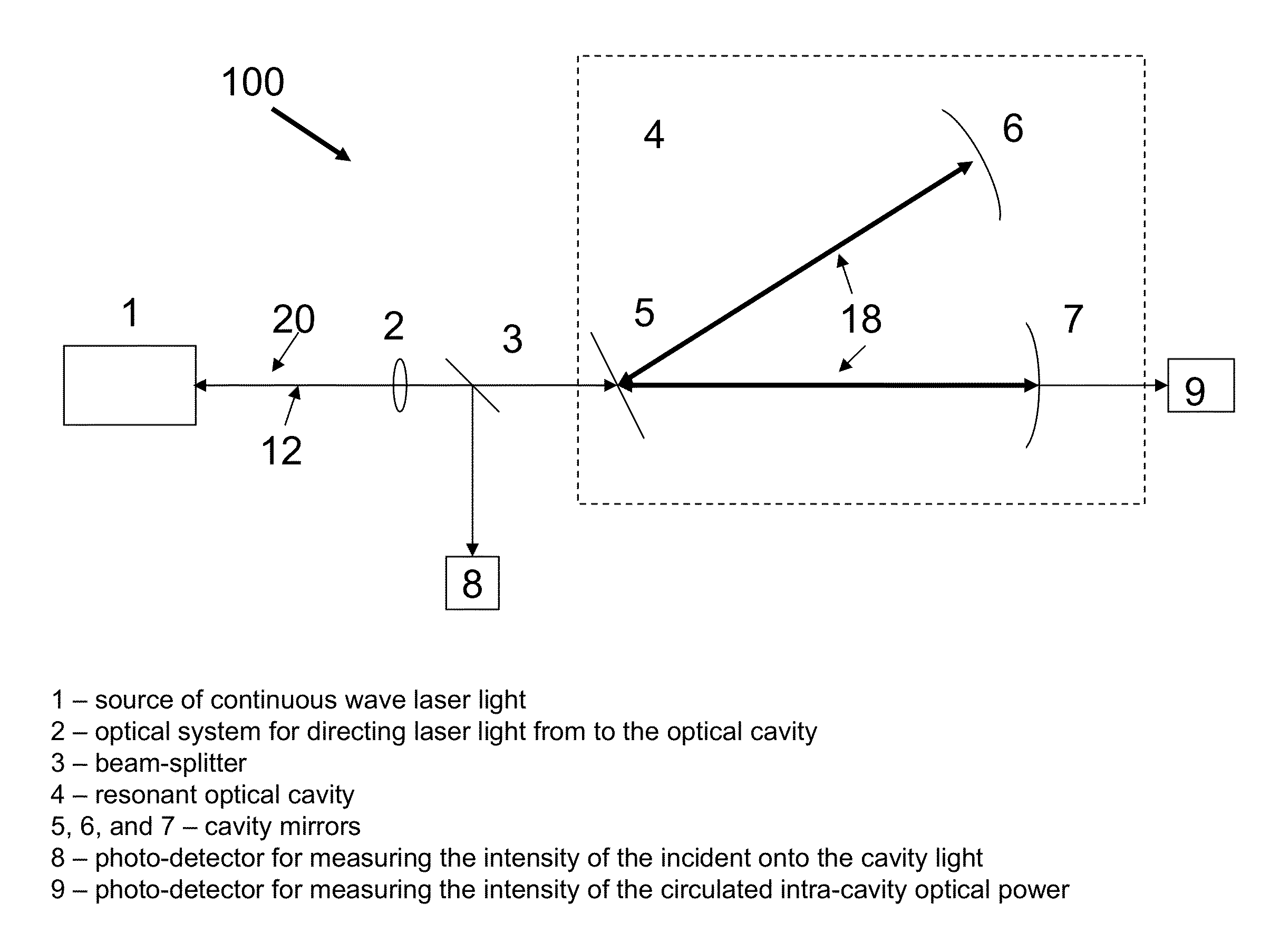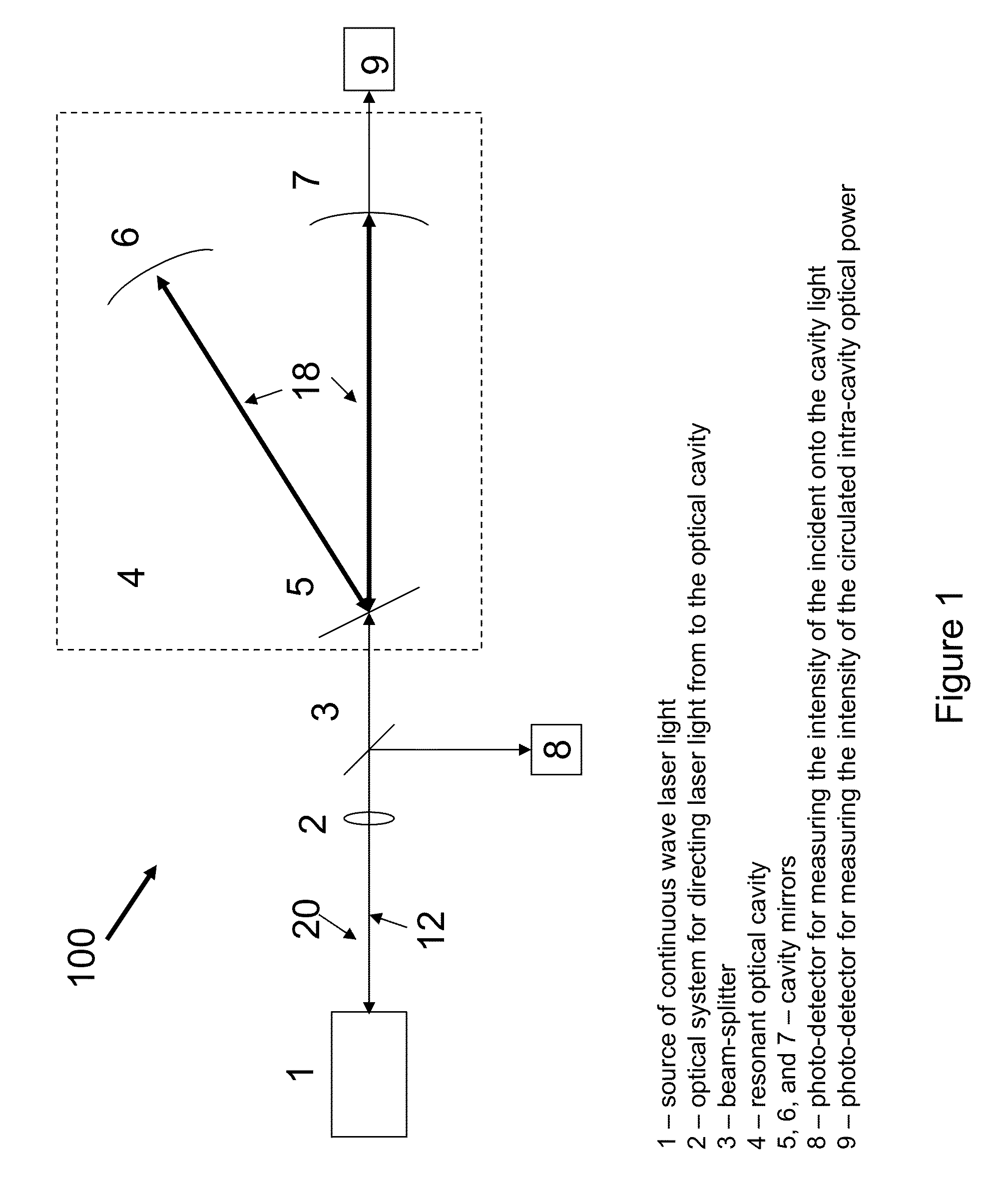Laser based cavity enhanced optical absorption gas analyzer with laser feedback optimization
a laser feedback optimization and gas analyzer technology, applied in the field of trace gas detection, can solve the problems of limiting the enhancement of gas mixture absorption by the cavity, limiting the possibility of laser scans, and unable to provide reproducible scan-to-scan mode coupling as laser scans, so as to improve long-term stability and reproducibility, and enhance absorption spectroscopy
- Summary
- Abstract
- Description
- Claims
- Application Information
AI Technical Summary
Benefits of technology
Problems solved by technology
Method used
Image
Examples
Embodiment Construction
[0031]The present invention provides cavity enhanced absorption spectroscopy systems and methods for measuring trace gases with improved scan to scan mode coupling efficiency and improved optical feedback control.
[0032]Embodiments of the present invention provide simple, precise and reliable cavity enhanced absorption spectroscopy systems and methods for detecting trace gases that have improved accuracy and stability as compared to existing systems and methods based upon similar principles. This is achieved, in part, by excluding from the optical path between the laser and the cavity components that may cause optical interference effects, temperature, and / or ageing drifts, etc., and adding to or enhancing features of the remaining components to provide improved device operation in the absence of the removed components. For example, embodiments of CEAS systems as disclosed herein advantageously do not require or need any settable attenuator, e.g., placed in the path between the laser...
PUM
| Property | Measurement | Unit |
|---|---|---|
| mean optical frequency | aaaaa | aaaaa |
| frequencies | aaaaa | aaaaa |
| power | aaaaa | aaaaa |
Abstract
Description
Claims
Application Information
 Login to View More
Login to View More - R&D
- Intellectual Property
- Life Sciences
- Materials
- Tech Scout
- Unparalleled Data Quality
- Higher Quality Content
- 60% Fewer Hallucinations
Browse by: Latest US Patents, China's latest patents, Technical Efficacy Thesaurus, Application Domain, Technology Topic, Popular Technical Reports.
© 2025 PatSnap. All rights reserved.Legal|Privacy policy|Modern Slavery Act Transparency Statement|Sitemap|About US| Contact US: help@patsnap.com



